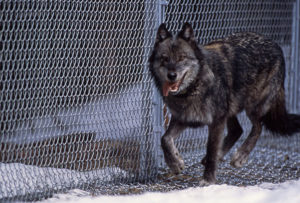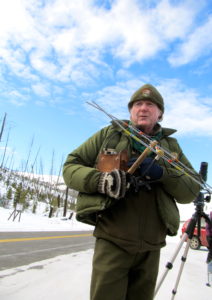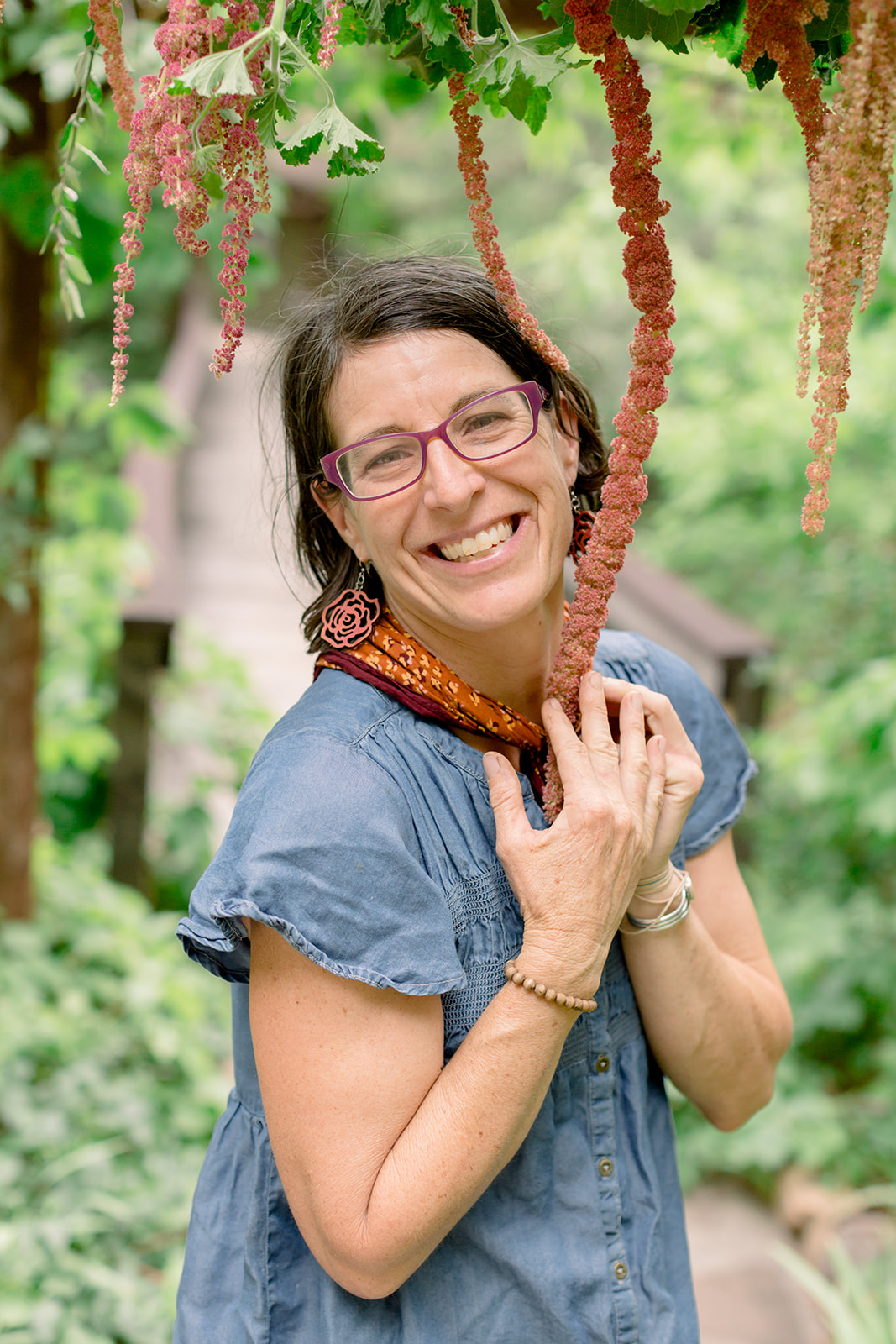 Every once in a while there is a day in your life that you never want to forget. I’m thinking of one of a day in Yellowstone National Park a few winters ago that reminded me why I am committed to conservation work. I was at a leadership retreat in Montana with a group of people working for conservation organizations. We had spent days inside discussing the human side of conservation in small groups, taking notes on flip charts and scheming about how to transform our organizations to be more effective at our work. We snuck in a morning of wolf watching to break up the workshop.
Every once in a while there is a day in your life that you never want to forget. I’m thinking of one of a day in Yellowstone National Park a few winters ago that reminded me why I am committed to conservation work. I was at a leadership retreat in Montana with a group of people working for conservation organizations. We had spent days inside discussing the human side of conservation in small groups, taking notes on flip charts and scheming about how to transform our organizations to be more effective at our work. We snuck in a morning of wolf watching to break up the workshop.
The day began in the pre-dawn winter darkness. The curtain of night lifted and morning light flooded the snow-covered world, revealing animal tracks everywhere crisscrossing the snow. The landscape was alive with bison, elk and, of course, the famous Yellowstone wolves.
Wolves were historically the most prevalent species in the world, but by 1930 they had been hunted to the brink of extinction in the lower 48. The federal government listed them as an endangered species in 1974. In 1995, the U.S. Fish and Wildlife Service captured 14 wolves in Canada and released them into the 2.2 million acre Yellowstone National Park. Today the wolf-watching economy brings in $35 million in tourism each year to the region.
Our first clue that there was wolf activity nearby was a large flock of ravens competing for a carcass with four bald eagles who were waiting in a nearby snag. Coyote had already had his fill and trotted casually down the road. There also happened to be a large group of people huddled around spotting scopes.
 In the midst of the crowd we met Rick McIntyre, a park ranger. Rick has been observing the wolf packs in Yellowstone since their release. As we looked through the scopes at two wolves napping in the snow, Rick recounted the soap opera of individual pack members he has been watching for 20 years. Dressed from head to toe in his winter issue green and gray uniform, Rick was slightly disheveled and elfish, and all heart. We immediately connected with his passion for the wolves and hung on his every word.
In the midst of the crowd we met Rick McIntyre, a park ranger. Rick has been observing the wolf packs in Yellowstone since their release. As we looked through the scopes at two wolves napping in the snow, Rick recounted the soap opera of individual pack members he has been watching for 20 years. Dressed from head to toe in his winter issue green and gray uniform, Rick was slightly disheveled and elfish, and all heart. We immediately connected with his passion for the wolves and hung on his every word.
Rick loved our captive audience of conservation and science nerds. He offered to take us to the den site of Wolf No. 9, the first female wolf released as part of the experimental population.
We followed him along a snowy trail as he spun the story of Wolf No. 9. She was one of the original wolves transported to Yellowstone from Canada—a lone wolf with a pup. Biologists suspected her mate had been killed. While in the acclimation pens she took a shine to another relocated wolf—No. 10—and by the time they were released into the Park she was pregnant. No. 9 was the first relocated wolf to reproduce. Unfortunately her mate was illegally killed just outside the Park as her first litter of eight pups was born.
Rick was present when biologists swooped in and brought Wolf No. 9 and her pups back to the pens, fearing their safety. Not too long after that she found another mate who became a fine stepfather and they had five more litters together. She became the alpha female of the Rose Creek Pack.
Rick led us up a hill into a forested slope to No. 9’s den site. It was a big hole, partially obscured by a tree root. He encouraged us to climb in. Emily, who works on Mexican wolf recovery in Northern Arizona eagerly obliged. With only her torso exposed she smiled broadly and threw her head back letting out a hearty howl. I thought about Emily’s own struggle to advocate for Mexican wolves in the face of constant opposition.
Rick described the last years of No. 9’s life, which were not very happy. She was kicked out of the pack by her daughter, and gave birth to a litter of pups that did not survive. She died not long after that, alone. She experienced a life of constant struggle to survive that in the big picture didn’t seem like much. Rick explained that the irony is that No. 9’s bloodline is the dominant gene in 70 percent of the present Yellowstone wolf population of about 78 wolves. Her perseverance against great odds was passed along to her children and great-grand children who are survivors.
Rick thanked us for the work we were doing to protect wild places and the species that depend on them. He told us, “When you face uphill battles and feel like you have not been able to make a difference, think of No. 9’s life. You may never see the impact of your work in your own lifetime. Maybe someone you mentored will take the lessons you taught him or her to accomplish something great. The small efforts are sometimes all we have—but they can add up to big changes.”
We descended back into the valley in silence, grateful for Rick’s story. A sound rang out—too low for the wind, and too steady to be highway noise. I couldn’t believe it—a wolf howling! I remembered the words of Aldo Leopold’s famous essay Thinking Like a Mountain, where he aptly describes the wolf howl as “an outburst of wild defiant sorrow, and of contempt for all the adversities of the world.” To me it also sounded like hope.
Kate Watters is a plant enthusiast, writer, artist and musician. She directed the Volunteer Program at Grand Canyon Trust for seven years, and recently took a hiatus to Santa Cruz, Calif., where she was farm apprentice at the Center for Agroecology and Sustainable Food Systems. She is now armed with hand pruners and a harvest knife and intends to apply her newfound knowledge and passion to growing all kinds of plants in northern Arizona.

